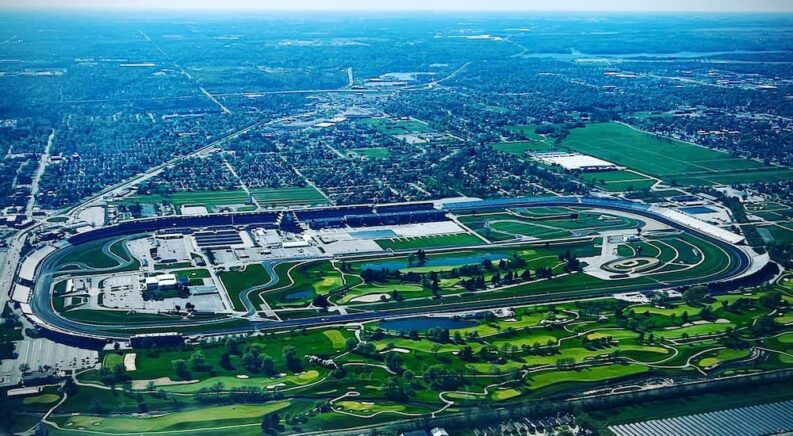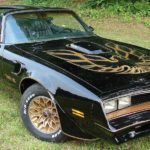Almost as long as cars have existed, people have raced them. From early point-to-point races like the 1908 New York to Paris event to modern short tracks, superspeedways, and road courses, thousands of circuits have existed in the past 150 years. Today, the National Speedway Directory and RacingIn.com estimate there are over 1,200 active race tracks in the US that host everything from local weekly events to national touring series.
As someone who’s loved racing all my life and has been fortunate enough to work in the industry, I’ve been to many excellent facilities. However, I know some are more famous than others. I decided to try to come up with the 10 most famous race tracks in the US that every race fan should try to visit. It was tough to narrow down, but here are 10 tracks that rise above the rest, plus 10 honorable mentions that just missed the cut.
Indianapolis Motor Speedway
You can’t make a list of famous race tracks without “The Brickyard,” so nicknamed for the bricks that once paved the track. The 2.5-mile rectangle in Indianapolis, Indiana, opened in 1909, making it the world’s third-oldest purpose-built race track and second-oldest still operating. Originally a test track for automakers, Indy soon began hosting races, leading to the inaugural Indianapolis 500 in 1912. The event is so synonymous with open-wheel racing that today, the country’s top open-wheel series is called “IndyCar.” NASCAR joined the ranks in 1994. Today, the track also has a road course that hosts the IMSA SportsCar Championship and more.
Daytona International Speedway
When Bill France Sr. founded the National Association for Stock Car Auto Racing (NASCAR), the biggest event was held on the Daytona Beach Road Course in Florida. He knew NASCAR would outgrow the course, though, and began constructing the Daytona International Speedway. It opened in 1959 with the Daytona 500. Amplified by the track’s 2.5-mile size and steep 31-degree corner banking, the event became the world’s biggest stock car race. The facility now includes multiple road courses where IMSA holds the 24 Hours of Daytona, and the AMA SuperCross Championship also competes.
WeatherTech Raceway Laguna Seca
Professional sports car races were run through the forests of Pebble Beach, California, from 1950 to 1956. But after a fatal accident, investors pooled their resources for a permanent track to replace the street course. The 2.238-mile Laguna Seca Raceway, which was built on part of what was then Fort Oud, opened in 1957 and still hosts some of the country’s biggest road racing series. The IMSA SportsCar Championship, Trans-Am Series, and MotoAmerica have been annual visitors for decades. The IndyCar Series returned in 2019 after a long absence, all set against a beautiful Pacific view.
Charlotte Motor Speedway
A joint project between businessman O. Bruton Smith and racer Curtis Turner (both of whom are in the NASCAR Hall of Fame), Charlotte Motor Speedway opened in 1960 with what is still the longest stock car race. The World 600 is part of an international motorsports tripleheader on Memorial Day Sunday that includes the Grand Prix of Monaco and the Indianapolis 500. The track’s “quad oval” shape was later copied incessantly, and there’s also an inner road course that used to host IMSA and now holds NASCAR events. Despite its name, the track isn’t in Charlotte, North Carolina, but nearby Concord.
Watkins Glen International
Who would have thought a world-famous track would be nestled in Western New York? “The Glen” opened in 1956 after several years of successful SCCA-sanctioned street races in the area. It hosted the Formula 1 United States Grand Prix from 1961 to 1980, the longest time an F1 race was ever held at one particular venue. Today, it is home to multiple NASCAR and IMSA events. NASCAR runs on the Short Circuit, while IMSA uses the Long Circuit, which adds the infamous “Boot.” The track has also held IndyCar events in the past, along with major music concerts.
Bristol Motor Speedway
Nicknamed “The Last Great Colosseum,” Tennessee’s Bristol Motor Speedway is arguably the world’s best-known short track (a track less than a mile long). The 0.533-mile track opened in 1961 and immediately joined the NASCAR schedule. However, the combination of increased banking in 1969 and the addition of a night race in 1978 sent the track into the stratosphere. At one point, the NASCAR Cup Series races attracted 170,000 fans per event to Bristol. The track was converted to dirt for several events in the early 2020s, and there’s a drag strip that was once the home base for the International Hot Rod Association.
Eldora Speedway
Dirt tracks are the most popular type of auto racing track in the US, and Eldora Speedway is the most famous. The Rossburg, Ohio, track opened in 1954 as a quarter-mile oval and was later expanded to a half-mile. Its signature World 100 event has been held since year one, and other nationally-known races like the King’s Royal and Dirt Late Model Dream have joined the annual calendar. Furthermore, the track has held multiple events paying at least $1 million to the winner. Multi-time NASCAR champion Tony Stewart purchased the track in 2004 from founder Earl Baltes.
Road America
As the Midwest version of Watkins Glen, Road America is another acclaimed race track in the middle of nowhere. Located in Elkhart Lake, Wisconsin, about halfway between Milwaukee and Green Bay, Road America was built in 1955 after the state legislature banned racing on public roads. The massive 4.048-mile course hosts every major and minor U.S. road racing series, including IndyCar, IMSA, SCCA, Trans-Am, MotoAmerica, and GT World Challenge America, plus assorted club racing. It also held NASCAR Xfinity Series events from 2010 to 2023, plus three NASCAR Cup races.
Bowman Gray Stadium
There’s no race track like “The Madhouse.” Owned by the city of Winston-Salem, North Carolina, the quarter-mile oval was built in 1939 as part of a trend of adding race tracks around the edges of football stadiums. The track has survived and thrived to this day, drawing up to 23,000 people per event. Known for its aggressive, colorful drivers, Bowman-Gray Stadium spawned a TV show on the Discovery Channel in 2018 and hosted the NASCAR Cup Series Clash exhibition event in 2025. It must crown its annual champions in late August, though, so Winston-Salem State University can play home football games.
Sebring International Raceway
Florida is the only state to get multiple tracks on this list, but Sebring deserves the honor. This road course opened in 1950 and is located on Hendricks Army Airfield, a former WWII B-17 training base. The runways were used for the original track layout. The 12 Hours of Sebring, first held in 1952 and now sanctioned by IMSA, is a major international event considered a tune-up for the 24 Hours of LeMans. The GP Road Course has gone through several variations—the current configuration is 3.741 miles—but the prestige remains. As Dan Gurney once said, “A win here lasts forever.”
Honorable Mentions
- Milwaukee Mile: The oldest purpose-built US race track hosted its first race in 1903, and it still brings IndyCar and Indy NXT to the Wisconsin State Fair Park every year.
- Thompson Speedway Motorsports Park: As North America’s first asphalt auto racing track (1940), Connecticut’s Thompson Speedway is still motoring today with the original 5/8-mile oval and a 1.7-mile road course.
- Hickory Motor Speedway: This North Carolina short track is the “Birthplace of the NASCAR Stars,” with legends like Junior Johnson, Ned Jarrett, Harry Gant, and Ralph Earnhardt winning championships.
- Circuit of the Americas: The newest track on the list, this Austin, Texas road course opened in 2011 and hosts every major series, including Formula 1, NASCAR, IndyCar, Trans-Am, and MotoAmerica.
- Talladega Superspeedway: As the “big little brother” to Daytona, this 2.66-mille, 33-degree-banked trioval opened in 1969 and hosts some of NASCAR’s fastest, most thrilling events.
- Thunder Road Speedbowl: Founded by Hall of Fame NASCAR announcer Ken Squier, this short track in Barre, Vermont, hosts the annual Milk Bowl dubbed “The Toughest Short Track Race in North America.”
- Darlington Raceway: The “Track Too Tough to Tame” hosted NASCAR’s first 500-mile event in 1950, and the Southern 500 at the unique egg-shaped track remains a staple.
- Knoxville Raceway: The “Sprint Car Capital of the World” is the home of the Knoxville Nationals, bringing the world’s best drivers to Iowa’s Marion County Fairgrounds.
- Michelin Raceway Road Atlanta: This 2.54-mile road course is an illustrious stop for IMSA, MotoAmerica, and Trans-Am, and it’s right down the road from Atlanta Motor Speedway, giving Georgia race fans a one-two punch.
- Tulsa Expo Center: Every December and January, the Tulsa Expo Center installs a 1/5-mile indoor dirt track that hosts the world-famous Chili Bowl Midget Nationals and the Tulsa Shootout for micro-sprints.
Go Racing This Summer
I want to be clear that just because a track didn’t make this list doesn’t mean it’s not great. I’ve visited and watched races at countless amazing tracks, from Oxford Plains Speedway in Maine to Anderson Speedway in Indiana to the twisting Sonoma Raceway in Northern California. If you’re even a casual race fan, you owe it to yourself to get to a track this summer, whether it’s an internationally famous facility or a local track hidden in the countryside. As you’ve seen, sometimes a track is both.




